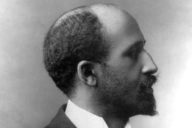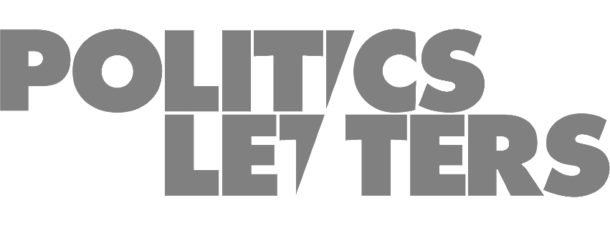From beneath the rubble of liberal democracy come the yowls and yelps of those pinioned under the wreckage, guardians of the old order trying to set the world back on course. They yelp not for themselves and everything they’ve lost (well, ostensibly not for themselves), but for the misguided younger generations, and the institutions of higher education which used to function as distribution centers for liberal values but are now going to hell on the social justice express.
While I don’t wish to speak on anyone’s behalf, I believe the response from campus would be “Fuck off.” No one cares about your pained concern and paternalist white liberalism. No, it’s #TimesUp on your gentlemen’s club comity: the slow-walking on race and gender equality finally caught up with the liberal elites. And shove your cherished “civility”: free speech always meant speech for the few, with neo-libs cloaking their pursuit of unfettered profit behind the pseudo “freedoms” of laissez-faireism, cynically weaponizing the First Amendment into a free pass for corporate money in politics. Your beloved Constitution is looking pretty tarnished too. Watching a minority party hijack every branch of government, we can hear the slaveholders who wrote the thing last-laughing it up from the grave, as the anti-democratic stink bombs they planted (the composition of the Senate, the electoral college) go off in our multicultural faces.
Against this backdrop of generational incomprehension comes The Coddling of the American Mind: How Good Intentions and Bad Ideas are Setting Up a Generation for Failure, co-authored by Greg Lukianoff and Jonathan Haidt. The title curtseys, obviously, to Allan Bloom’s cranky 1987 bestseller, The Closing of the American Mind: How Higher Education Has Failed Democracy and Impoverished the Souls of Today’s Students, while maintaining a prudent distance from the book itself.
Bloom, you’ll recall, was widely read as a conservative though he never admitted to being one, despite his antipathy for feminism, the sixties, and Mick Jagger—a “shrewd middle class boy” playing the “possessed lower-class demon.” It was a deeply weird book: when Bloom railed against his favorite bogeyman, rock and roll, it was with florid turns of phrase about its “hymns to the joys of onanism,” which turned life into “a nonstop commercially prepackaged masturbational fantasy.” The Coddling authors are, by contrast, at pains to present themselves as reasonable men, not tormented anti-masturbators, the downside being that they’re thus not quite as vivid in print. No one will be memorializing their eccentricities in roman à clef form anytime soon, as Saul Bellow did to Allan Bloom in his shiv-like tribute, Ravelstein. They’re anti-elitists, on the side of racial justice, against economic inequality; they even trot out their democratic voting record.
Though Lukianoff and Haidt steer clear of Bloom’s declinist sensibility and refrain from bashing the usual conservative strawmen—“multiculturalism,” “postmodernism,” “relativism,” and “political correctness” are terms thankfully avoided (at least by name)—a certain fogeyism invariably creeps in, namely dire warnings about cell phones and social media, the print equivalent of watching grandpa take out his teeth in a restaurant.
Perhaps that’s unkind, but take the book’s central claim, that three “Great Untruths” permeate higher ed and are irrevocably harming students. These are:
The Untruth of Fragility: What doesn’t kill you makes you weaker;
The Untruth of Emotional Reasoning: Always trust your feelings;
The Untruth of Us Versus Them: Life is a battle between good people and evil people.
Their ascendancy, we learn, dates from around 2013, when the “iGen”—short for Internet Generation, those born in 1995 and after—started entering college. Believing in these untruths is not students’ fault, however. They’ve been sabotaged by adults: in the first instance hyperprotective parents, then campus bureaucrats determined to shelter them from the discomforts of life, including intellectual challenges. These untruths are also highly contagious, say the authors, germinating from campus to the larger culture, taking hold in work life and national politics, spreading beyond our borders into the English-speaking world, and threatening democracy everywhere. That’s a lot of territory.
Just to be clear, I don’t particularly disagree with the book’s description of the dominant emotional style on campus at the moment. That said, curatives composed of homilies and bullet points aren’t likely to heal any generational rifts, and though the book is framed as “a social science detective story,” the story the authors are proffering about why these Great Untruths are untrue—that they defy ancient cross-cultural wisdom and contradict current psychological research—feels out of touch.
Perhaps the throwaway universalism of “ancient wisdom” would have been an easier sell in the days when campuses were more homogenous places than they’ve become. Take, as an example, the university where I teach, a private, ostensibly “elite” campus of roughly 8,000 undergraduates. Less than half the current freshman class is white (42 percent are minority), and 19 percent are Pell recipients, meaning a family income of less than $50,000. (In fact, Pell grants favor students whose families earn less than 25K.) Among the student body as a whole, more than 75 countries are represented and more than 50 languages spoken. When Haidt and Lukianoff say that we on campus need to adopt a shared reality rather than separate ones, what shared reality would that be? Anti-universalism isn’t the nefarious ideology of left wing professors, it’s demographic realism. The authors say they understand that campuses are increasingly diverse places, yet don’t seem to think that intellectual life changes accordingly.
My own experience is that it does and has, though perhaps I’ve spent too much time in the vicinity of humanities departments, where no idea holds more credence than that knowledge is situated. It’s easy to mock the “Speaking as an x…” trope, and sure, it can be a form of virtue-strutting. But to make a convincing case for shared realties, Haidt and Lukianoff would need to actually address the scholarship behind the trope. Take, for instance, Edward Said’s profoundly influential Orientalism (1978), which argues that those timeless truths about the “East” in Western scholarship and literature weren’t neutral intellectual assessments but rather justifications for imperial and colonial projects. There’s no “disinterested” scholarship or Archimedian perch outside the political fray. Just as Critical Legal Studies tells us (and the headlines daily confirm) that the law isn’t neutral or impartial but promotes social and economic interests in veiled guises, so too with history books. Does it really need saying that those “ancient truths” come into the world dripping with the blood of the squelched?
The Coddling authors aren’t interested in arguing about intellectual standards in the humanities, the familiar conservative lament about politically engaged scholarship. Their bailiwick is instead mental health and its afflictions, and their main argument against the Great Untruths is that believing them is depressing. Teen anxiety, depression and suicide have risen sharply at exactly the same time that American childrearing trends started favoring overprotectiveness as opposed to the “free range parenting” of yore, they say.[1] Campuses too have become steeped in what they label “safetyism”—while previous generations of activists waged their protests for principled not self-protective motives, today’s activists are beset by fragility, they diagnose. Unintentional slights are experienced as acts of aggressions, and “Even those who are not fragile themselves often believe that others are in danger and therefore need protection.”
Are campus mores depressing students or is the world itself depressing? Lukianoff, a First Amendment lawyer and the head of the Foundation for Individual Rights in Education (FIRE), a nonprofit that focuses—often controversially for the left—on campus free speech issues, reveals that he’d been depression-prone most of his life until discovering that cognitive behavior therapy was more effective than drugs. (Co-author Haidt who teaches in the business school at New York University is a social psychologist who’s previously written on CBT.) Lukianoff started noticing that the cognitive distortions CBT was teaching him to avoid, the catastrophizing and negativity that depressives specialize in, were identical to those Great Untruths plaguing campus culture. After conferring, the co-authors concluded that students are unwittingly being taught the mental habits of the depressed, such as focusing excessively on emotional responses with insufficient effort at developing resiliency.
The upshot: students have started reacting to ideas and speakers as if they posed actual dangers, leading to the rise of trigger warnings, speaker disinvitations—even being taught the classics is experienced as a threat, the authors report, citing a 2015 op-ed by Columbia university undergraduates who argued that “many texts in the Western canon” contain “triggering and offensive material that marginalizes student identities on the classroom.” Acknowledging that the essay made nuanced points about diversifying the canon—it’s a sign of the book’s infernal reasonableness that it refrains from mocking students even when gift-wrapped opportunities present themselves—their point is that believing in one’s own fragility becomes a self-fulfilling prophesy. Disagreements get treated as equivalent to a medical risk; if it interferes with students’ equanimity, it should be banned, like cigarette smoke in restaurants.
Students should instead seek out challenges, the Coddling authors advise. Living in intellectually safe bubbles on campus doesn’t prepare anyone for life post-graduation.
The likely retort from campus would be that for many students—particularly first generation and minority students—graduation itself is hardly guaranteed. Take an example ripped from recent headlines: an anti-immigration frat brother standing outside the campus Latino Living Center at Cornell yelling “Build a wall” shortly after Trump’s decision to end DACA. When Haidt and Lukianoff write “Many university students are learning to think in distorted ways, and this increases their likelihood of becoming fragile, anxious, and easily hurt” [their emphasis], it sounds like they’re more interested in preserving the frat guy’s right to expressive bigotry than the Latino Center residents’ tenuous sense of belonging on their Ivy League campus. But why should one matter more in our calibrations than the other?
Because, the authors argue, analyzing the world primarily in terms of power leads to “us versus them” thinking. Invoking Herbert Marcuse’s 1965 essay “Repressive Tolerance” as a surrogate for the contemporary campus left, they reveal (it seems to shock them) that Marcuse believed free speech only benefited society under special conditions “that almost never exist: absolute equality,” a position they call “chilling.” That way of thinking leads straight to tribalism, they charge, not to mention seeing straight white males as oppressors. Yes, students should be taught “to recognize a variety of kinds of bigotry,” but given the “enormous progress on extending civil rights to groups that did not have them in 1965,” it’s a false idea that “Life is a battle between good people and evil people” [their emphasis again].
At the risk of succumbing to the dreaded us-versus-them thinking, the fear that an ideologically doctrinaire campus compromises “the ability of scholars to seek truth” seems to ignore that their own positions are, equally, a species of ideological doctrine. Yes, Marcuse favored equality over liberty. The Coddling authors favor liberty over equality. They think progress on social equality since 1965 has been sufficient. I believe the counter-argument from the supposed heirs of Marcuse would be that not recognizing that people are situated differently in the world while claiming to be on the side of equality is a false position.
Marcuse’s point is that treating people as equals when they’re not actually produces inequality. Take a supremely obvious example: a pregnant woman whose boss is committed to absolute gender equality, so fires her for not showing up at work the day she unexpectedly goes into labor. He would have fired a man who didn’t show up, right? Typically this doesn’t happen because we implicitly understand that abstract principles of equality can lead to disastrously unequal results. Which is why framing the campus left as hardline ideologues with false ideas about power, and themselves as neutral parties, is disingenuous. The real issue—and a deeply political one, no matter how you slice it, is: How much equality suffices?
If fragility—or the performance of fragility—is indeed a common thread for the iGen, is this a weakness in need of remedy or a different generational style? Sure it runs counter to the self-reliant individualism the Coddling authors assume as a default mental health norm, but personality types do shift throughout history. As with cell phones and social media, it seems unlikely that what’s been called the “therapeutic self”—which appeared on the sociological radar from mid-twentieth century on under various nomenclatures—is going away anytime soon. Haidt and Lukianoff offer a trajectory of the term “trauma” from the 1980s to present, noting the astronomical spike in post-traumatic stress disorder diagnoses in the early 2000s. Once PTSD was thought to be caused by terrifying experiences like war, rape, or torture, these days anything experienced as emotionally damaging warrants a PTSD diagnosis—indeed, I recall a student a few years ago telling me her therapist had diagnosed her as suffering from it after a breakup. I suggested—it was a filmmaking class—that she try using the experience in her work, but she felt it was still too raw.
But it’s not counseling offices alone where trauma theory holds sway; it’s so deeply embedded in campus intellectual life and culture that it’s what Michel Foucault called an episteme: a condition of possibility for understanding the world, contouring knowledge and beliefs at every level. In the humanities and social sciences trauma is a powerful theory of history and experience across the disciplines, reshaping the curriculum. In literature and the arts, it’s a potent expressive force. In the culture-at-large it’s increasingly a way of understanding the relation between mind and body: firmly embedded in the ethos of addiction and recovery narratives (and twelve-step programs), also the memoir genre and confessional culture generally. Wherever the first person is in use, trauma is probably in the vicinity. Thinking you’ll talk anyone out of their trauma with a dose of level-headedness is either hubris or naiveté.
One reason for its staying power is that trauma is such a robust tool of articulation. As Cathy Carruth puts it in Unclaimed Experience: Trauma, Narrative and History (1996), an early attempt to decipher the reach of the concept, trauma produces “a voice that is paradoxically released through the wound.” It’s not a novel idea in relation to the arts, obviously—see Freud’s writing on creativity (the Leonardo study especially), or Edmund Wilson’s The Wound and the Bow, which drew on the myth of Philoctetes, whose suppurating wound was inextricable from his talent.
Fast forward to today’s classrooms, where the premise of the wound—not least the socially imposed wounds of race, ethnicity, and queerness—is frequently how students find a voice, or an intellectual “in.” You might say that the wound is to our cultural moment what equally metaphysical notions like “inspiration” or “talent” were to our heartier forbearers. It too can be transformed into cultural capital—and why not? The wound is a more democratic creative force than inspiration or talent, which were handed out far more selectively. So why all the alarmism? Trauma is, after all, a big tent.
***
I imagine that Coddling’s epigraph instructing that we should “Prepare the child for the road, not the road for the child” (derived from folk wisdom, the authors say) is supposed to invoke rambunctious imps scampering up life’s promising paths. In my case it brought to mind a severely disabled student enrolled in one of my classes a few years ago. She had very little bodily mobility and got around campus year-round in a motorized wheelchair, operated by the one finger she could move. I admired the hell out of her—she faced incredible obstacles on an hourly basis that I could barely envision.
The building where my office is housed, one of the oldest on campus, has a steep flight of stairs in front. One of my colleagues had lobbied for decades to have the building made accessible. When she spoke about it at faculty meetings I slightly tuned out—I’d never seen anyone wheelchair-bound on campus so it didn’t seem especially urgent. I was an idiot—the reason I hadn’t seen disabled people around was precisely because of the spotty accessibility. The building finally got a ramp and an elevator a few years before my disabled student arrived, though the one time she came to office hours was still an ordeal, because the automatic door at the bottom of the ramp was broken. I had to go down and open it for her.
Presented with homilies about children and roads, I think of that student (since graduated), that long-delayed ramp, that broken door (and the many other “broken doors” certain students face), and I think it’s kind of a stupid saying. Why? At best it’s out of touch; it imagines students who all resemble the authors. At worst it reveals the callous underbelly of well-meaning liberalism: a rising tide will lift all boats and when it doesn’t, the boats should just buck up. From an activist perspective, that’s not good enough. Once again, the question is how much equality to demand. Liberalism is premised on equality of opportunity, not equality of results. The radical program is, by contrast, a redistributive one, to put it crudely. It wants better results. You can disagree, but there aren’t neutral corners.
The idea that good intentions suffice can also be its own version of “safe spaces.” Here I must point out that for authors who militate against them, Coddling plays it awfully safe on certain risky subjects, namely sex and alcohol. By rights, these should be squarely in their sightlines, including the thorniest issue of all: whether campuses are or are not “rape cultures.” What about the much-vaunted 1-in-5 rape statistic which, according to many, makes campuses literally unsafe for female students? Critics of the 1-in-5 stat (there are methodological disputes) point out that were it accurate, rates of rape on campus would be equivalent to those in the Congo, where rape has been employed as a weapon of war. What do Haidt and Lukianoff think? They’re not saying. The intersections of sex and drinking are also where liberal procedures—due process, the presumption of innocence until proven guilty—are most under threat, particularly in Title IX offices. (Lukianoff himself has been on the frontline of these issues, making it even more surprising that the book steers so wide of the subject.) [2]
Does safetyism leave students unprepared for the injuries of life, as Coddling suggests? In fact, I suspect the opposite: rather than intellectually coddled students finding the “real world” too daunting, recent graduates are busy remaking the place according to their own specifications.
When I occasionally venture off-campus my social milieu is the writing-publishing world, where a frequent topic of middle-aged people’s conversation is that the professional gatekeepers are getting younger and younger, and their editorial views are shaped by campus doctrines. Writer friends and acquaintances—I’m talking about people with publishing successes and good agents—relate anxious anecdotes about a cowed older generation of editors deferring to the younger ones on acquisitions and content decisions. Writers with contrarian views on gender and cultural politics are finding it necessary to move to new publishing houses when younger editors are put in charge of their books, or to pull magazine assignments after editorial skirmishes they aren’t going to win. Then there are online reviews, which pay badly, making them good jumping off points for recent grads with literary ambitions. Attention-grabbing takedowns, especially of anyone insufficiently deferential to the current pieties, is how they move on to better paying gigs at print publications. A previously bestselling novelist I met recently said that pushing back against cultural censoriousness had definitely hurt book sales, due to online reviews by vicious youngsters who spend all day retweeting their jibes. The question is whether you shut up or go bankrupt clinging to your principles.
This is par for the course, obviously; each generation kills its parents. The mystery is why Haidt and Lukianoff are so sure the younger generation is losing.[3]
***
[1] Whether or not there’s rising anxiety among teens is apparently up for debate: New York Times psychiatry contributor Richard Friedman devoted a recent column, “The Big Myth About Teenage Anxiety,” to rebutting a previous Times magazine feature, “Why are More American Teenagers Than Ever Suffering from Severe Anxiety?”
[2] The only Title IX case mentioned in the book is one involving speech, not sex—my own at Northwestern, brought against me for writing an essay. (See Laura Kipnis, “My Title IX Inquisition,” Chronicle of Higher Education, June 12, 2015.) I should add that both Lukianoff, whom I’ve met a couple of times, and the staff at FIRE were very helpful to me when I was brought up on Title IX complaints a second time, for writing a book about the first round of Title IX complaints. I often refer people who contact me about campus speech cases to FIRE—I’m not always on the side of the positions they take, but having had my own run-ins with would-be campus censors, I’m also totally grateful for what they do.
[3] To conclude on an ironic (and rueful) note: this review was originally commissioned by Ian Buruma before he was fired at the New York Review of Books after running afoul of younger editors over a controversial essay. The NYRB declined to publish the review after I publicly criticized the firing.







No Comments